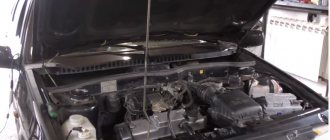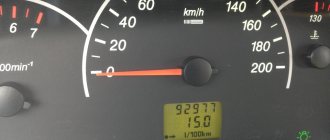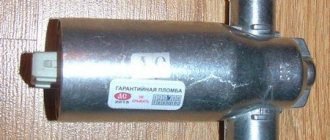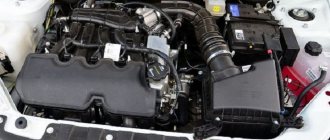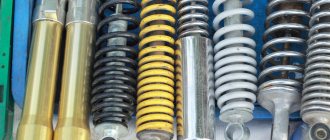Optimal engine speed when operating a car
The operating mode of the engine is one of the main factors influencing the wear rate of its parts. It’s good when the car is equipped with an automatic transmission or a variator, which independently selects the moment of transition to a higher or lower gear. On cars with “mechanics”, switching is done by the driver, who “spins” the engine according to his own understanding and not always correctly. Therefore, car enthusiasts without experience should study what speeds are best to drive at in order to maximize the life of the power unit.
Danger of driving at high speeds
It is well known that high speeds, especially near the red zone of the tachometer, will be extremely dangerous for the engine. In such a case, wear of the power unit is noted, the engine oil does not lubricate the moving elements well, the engine wears out and overheats, while the lubricant quickly loses its properties, which further aggravates the condition of the engine.
At the same time, you need to remember that several times a month it is still useful to spin the engine to such high speeds and give it what is called heat. That is, on the highway, drive at high speed for 5-10 kilometers, which will remove all carbon deposits and coking inside the engine. You just need to remember about safety during such preventative trips at high speeds.
Driving at low speeds with early shifting
Often, driving school instructors and old drivers recommend that beginners drive “tight” - switch to higher gear when the crankshaft reaches 1500–2000 rpm. The former give advice for safety reasons, the latter out of habit, because previously the cars had low-speed engines. Nowadays, such a mode is only suitable for a diesel engine, whose maximum torque is in a wider speed range than that of a gasoline engine.
Not all cars are equipped with tachometers, so inexperienced drivers with this driving style should be guided by driving speed. The early switching mode looks like this: 1st gear - moving from a standstill, transition to II - 10 km/h, III - 30 km/h, IV - 40 km/h, V - 50 km/h.
Such a switching algorithm is a sign of a very calm driving style, which gives an undoubted advantage in safety. The downside is the increased wear rate of power unit parts and here’s why:
Owners of cars equipped with an on-board computer can easily convince themselves of the uneconomical nature of driving under tension. It is enough to turn on the display to show instantaneous fuel consumption.
This type of driving greatly wears out the power unit when the car is operated in difficult conditions - on dirt and country roads, with a full load or a trailer. Owners of cars with powerful engines of 3 liters or more, capable of sharp acceleration from the bottom, should not relax either. After all, to intensively lubricate the rubbing parts of the engine, you need to keep the crankshaft at least 2000 rpm.
Optimal mode
However, by 1500 rpm the pump manages to reach its design capacity, pumps lubricating fluid, and wear drops to almost zero. Already at 1800 rpm. all friction units “float” onto oil films, direct contact between the surfaces of the parts disappears, and the wear rate goes to zero. The optimal operating mode of the motor begins.
The production of parts is already so small that it is not recorded by existing instruments. The ideal range of engine operation is from 2000 to 4000 rpm. This is where the maximum torque occurs.
Verdict for the motor. What does the expression “turn up the engine” mean? More details
Why is high crankshaft rotation speed harmful?
The “slipper to the floor” driving style implies constant spinning of the crankshaft up to 5–8 thousand revolutions per minute and late shifting of gears, when the noise of the engine literally rings in your ears. What are the consequences of this driving style, besides creating emergency situations on the road:
Running a car “to break” has an additional negative effect associated with the quality of the road surface. Driving at high speed on uneven roads literally kills suspension elements, and in the shortest possible time. It is enough to fly your wheel into a deep pothole and the front strut will bend or crack.
The general technical condition of the car, including its engine, cooling system, transmission and much more, can always be checked using a personal ODB-II auto scanner. One of the best representatives of this type of device is the Korean-made scanner Scan Tool Pro Black Edition.
How to ride correctly?
If you are not a race car driver or a fan of hard driving, who find it difficult to relearn and change your driving style, then to save the power unit and the car as a whole, try to keep the engine operating speed in the range of 2000–4500 rpm. What bonuses will you receive:
Recommendation. On most modern cars equipped with high-speed gasoline engines, it is better to change gears when the threshold of 3000 ± 200 rpm is reached. This also applies to the transition from high to low speed.
As mentioned above, car dashboards do not always have tachometers. For drivers with little driving experience, this is a problem, since the crankshaft rotation speed is unknown, and a beginner cannot navigate by sound. There are 2 options for solving the issue: buy and install an electronic tachometer on the dashboard, or use a table that shows the optimal engine speed in relation to the speed in different gears.
| 5-speed gearbox position | 1 | 2 | 3 | 4 | 5 |
| Optimal crankshaft rotation speed, rpm | 3200–4000 | 3500–4000 | not less than 3000 | > 2700 | > 2500 |
| Approximate vehicle speed, km/h | 0–20 | 20–40 | 40–70 | 70–90 | more than 90 |
Note. Considering that different brands and modifications of cars have different speeds and revolutions, the table shows average indicators.
A few words about coasting down a mountain or after acceleration. Any fuel supply system has a forced idle mode, which is activated under certain conditions: the car is coasting, one of the gears is engaged, and the crankshaft speed does not fall below 1700 rpm. When the mode is activated, the supply of gasoline to the cylinders is blocked. So you can safely brake the engine at high speed without fear of wasting fuel.
Source
Improved dynamic performance
To improve the dynamic characteristics of the VAZ 2114 engine on a budget, you can do the following:
- modify the intake and exhaust, namely install a larger throttle valve, an intake receiver and an exhaust without a 4-2-1 catalyst, popularly called a “spider”;
- split gear for phase adjustment;
- non-standard camshafts;
- if you have an 8-valve engine, the best solution would be to replace the cylinder head with a 16-valve one;
- modification of the cylinder head of varying complexity can increase the maximum power to 120 hp. With. without loss of resource.
Tuning can go as far as installing turbocharging, nitrous oxide injection and other means that significantly increase power, but all of them are quite expensive and reduce engine life.
When modifying, do not forget that all procedures must be supplemented with appropriate software for the control unit, otherwise your tuning may adversely affect the operation of the motor.
What engine speed should you keep?
Almost every driver is well aware that the life of the engine and other components of the car directly depends on the individual driving style. For this reason, many car owners, especially beginners, often think about what speed is best to drive at. Next, we will look at what engine speed should be maintained, taking into account different road conditions during vehicle operation.
Punctuation marks for participial phrases
Let's look at how the participial phrase stands out in a letter.
According to the rules, the participial phrase is isolated in three cases:
- If the participial phrase is worth after the defined word, he stands apart.
Hanging on the wall is a definition expressed by the participial phrase. It comes after the defined word “picture” and therefore stands apart.
- If the participial phrase comes before the word being defined, it is not isolated (except for the cases described in the next paragraph).
Hanging on the wall - a definition expressed by a participial phrase. It stands before the defined word “picture” and therefore is not isolated.
- The participial phrase is isolated regardless of its place in the sentence if any of the following conditions are met:
- the participial phrase refers to the personal pronoun (I, you, he, she, it, they);
the participle phrase has an additional adverbial meaning (causal, conditional, concessive);
- the participial phrase is separated from the word being defined by other members of the sentence.
Engine life and speed when driving
Let's start with the fact that competent operation and constant maintenance of optimal engine speeds allows you to achieve an increase in engine life. In other words, there are operating modes when the motor wears out the least. As already mentioned, the service life of the internal combustion engine depends on the driving style, that is, the driver himself can conditionally “adjust” this parameter. Please note that this topic is the subject of discussion and debate. More specifically, drivers are divided into three main groups:
Driving at low speeds
Let's take a closer look. Let's start with driving at the "bottoms". This mode means that the driver does not raise the crankshaft speed above 2.5 thousand rpm. on gasoline engines and holds about 1100-1200 rpm. on diesel. This driving style has been imposed on many since driving school. Instructors authoritatively assert that it is necessary to drive at the lowest speeds, since in this mode the greatest fuel economy is achieved, the engine is least loaded, etc.
VAZ 2114 engine modifications
Over the ten years of serial production of the VAZ 2114, the following was installed on it:
- 1.5i . Engine VAZ 2114 with a volume of 1.5 liters, with 8 valves. Its maximum power was 78 hp. C. at 5800 rpm. Torque at 3800 rpm reaches 116 N.m. Per 100 km in the mixed cycle, gasoline consumption is 7.3 liters. In this modification of the internal combustion engine, an injection intake with control through the electronics was used, instead of the outdated carburetor, and a new camshaft with corrected phases was installed. Thanks to the introduction of an injector into the VAZ 2114 engine, engineers were able to increase the efficiency of the engine, increasing its power, and at the same time reducing fuel consumption. This was a big starting step in the development of the entire range of internal combustion engines of the Volzhsky Automobile Plant.
- 1.6i . In 2004, a modification of the engine was released with an increased volume of 1.6 liters. It developed a power of 81 hp. With. at 5200 rpm and 125 N.m. at 3000 rpm. In the combined cycle, the engine consumes 7.6 liters of gasoline per 100 km. The VAZ 2114 engine with an injector and 8 valves received an increased volume due to the cylinder height increased by 2.3 mm, which made it possible to make a larger piston stroke. The ignition module was replaced by a coil. The internal combustion engine turned out to be more powerful and environmentally friendly, but fuel consumption increased compared to the previous model.
- 16V 1.6і (124) . Also in 2004, a 1.6-liter engine was released, but with 16 valves, that is, 4 for each cylinder. This engine already had 89 horsepower at the flywheel at 5000 rpm and 131 Nm of torque at 3700 rpm. The plant claims consumption in the combined cycle of 7.5 liters per 100 km. The VAZ 2114 8-valve engine with an injector received modifications in the form of an increase in the number of valves to 16 pieces. The rest of the characteristics remain the same. The car began to meet EURO-3 environmental requirements, gained an additional 8 horsepower and became a little more economical.
- 16V 1.6і (126) . In 2007, this engine was greatly modified, the volume remained the same 1.6 liters, but the power already reached 98 hp. With. at a speed of 5600 per minute, and the torque develops 145 N.m. at 4000 rpm. Fuel consumption was reduced to 7.2 liters per 100 km.
They worked hard on the old VAZ 2114 engine for 3 years and made several changes:
- the connecting rod and piston group is lightened by 39%;
- The timing drive has been changed, it has become automatically tensioned;
- valve holes have decreased in size;
- The quality of cylinder honing has improved significantly.




